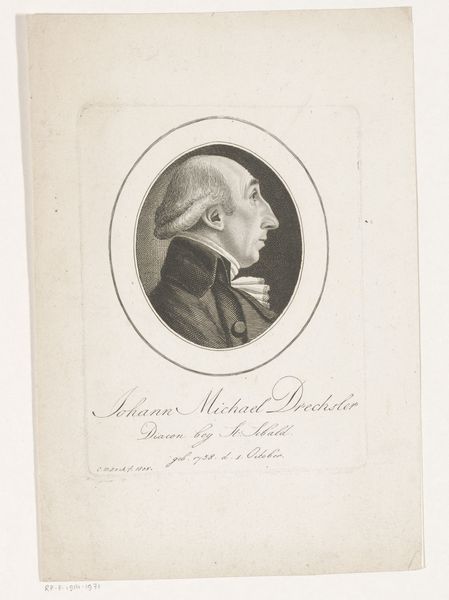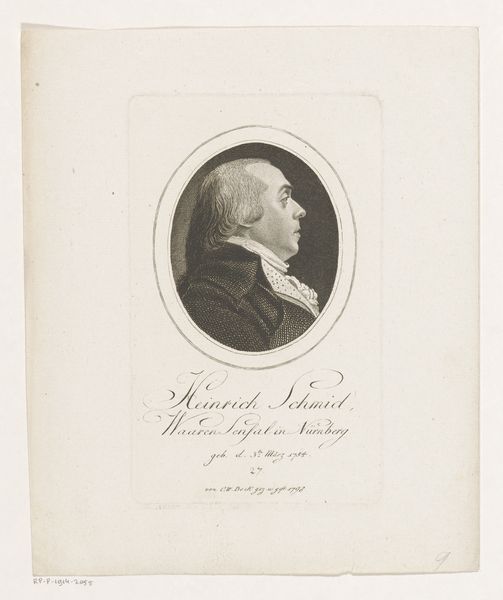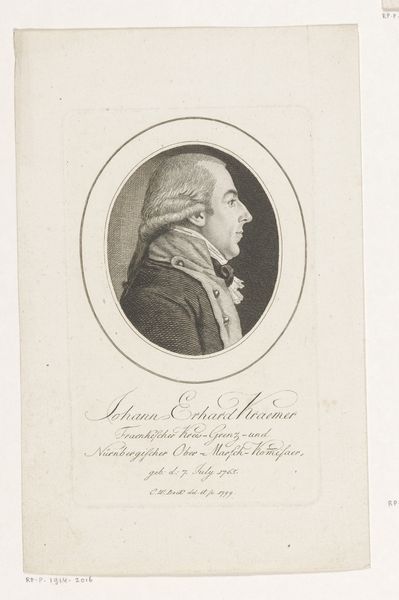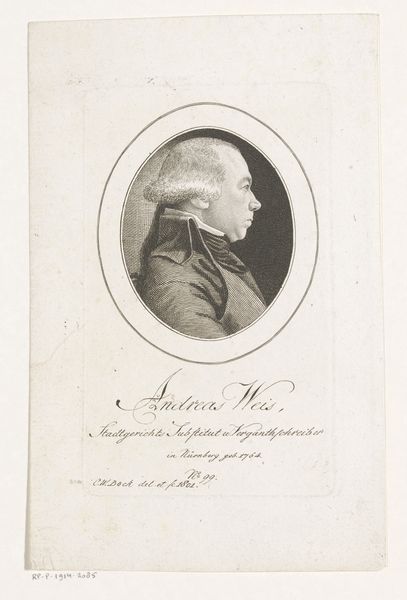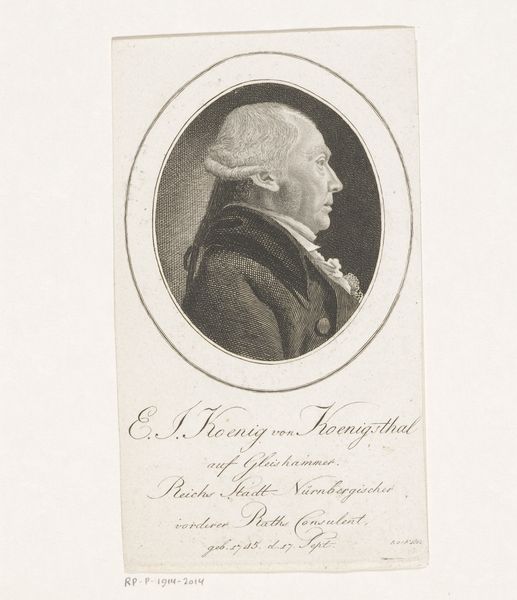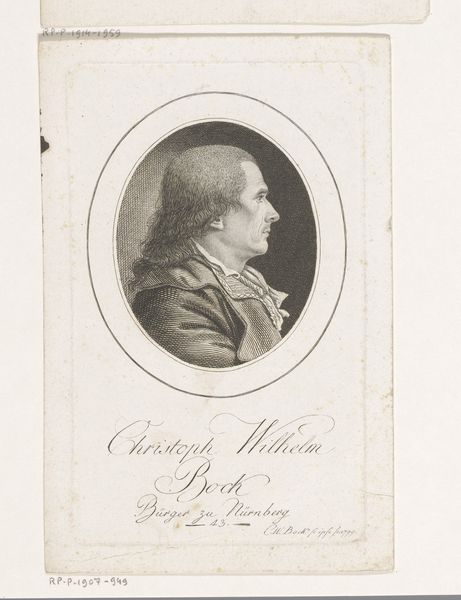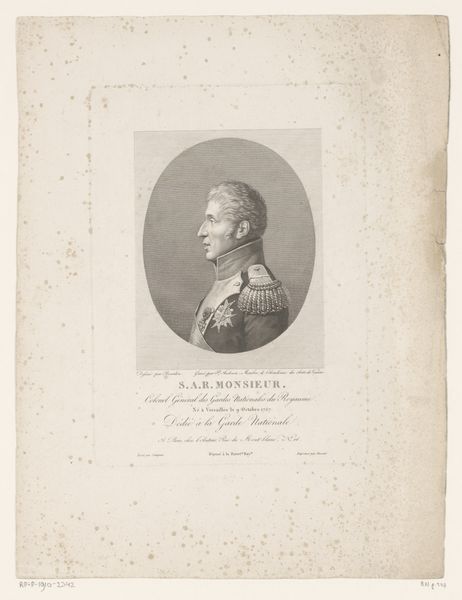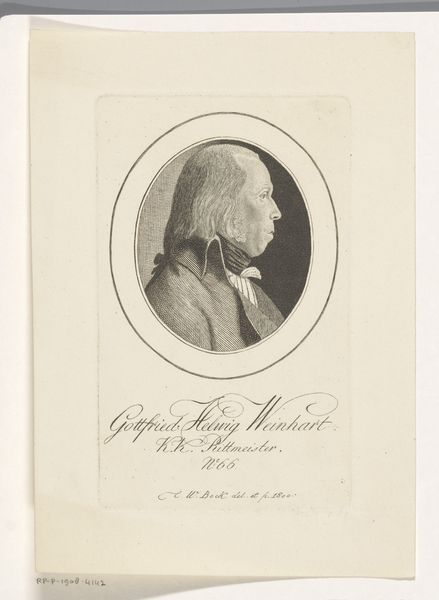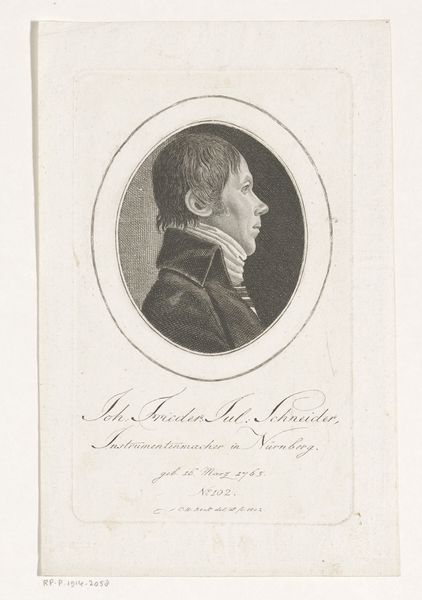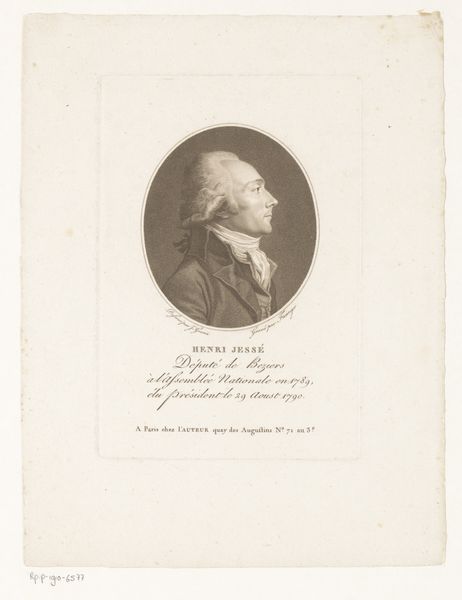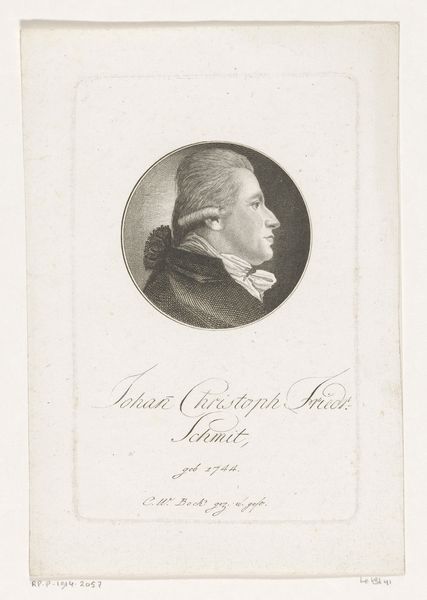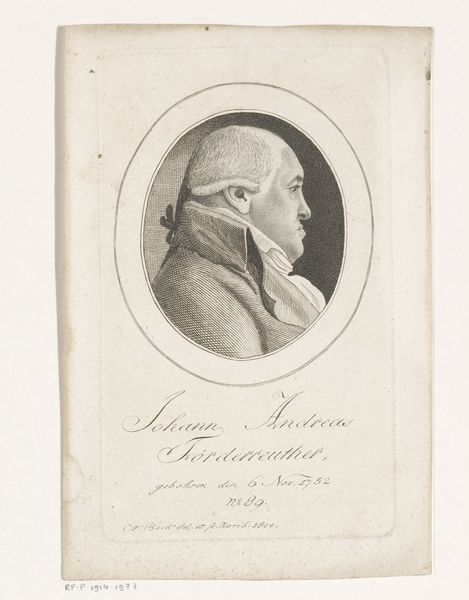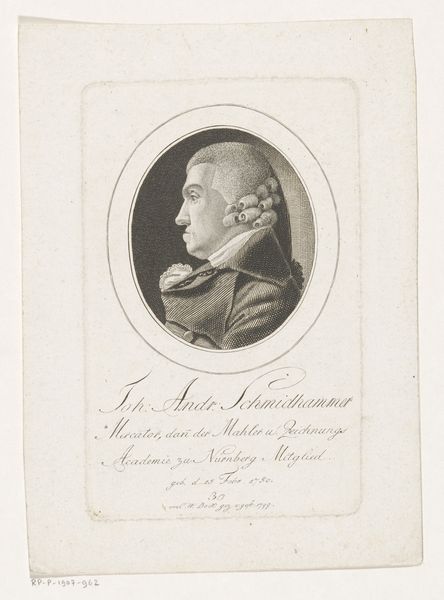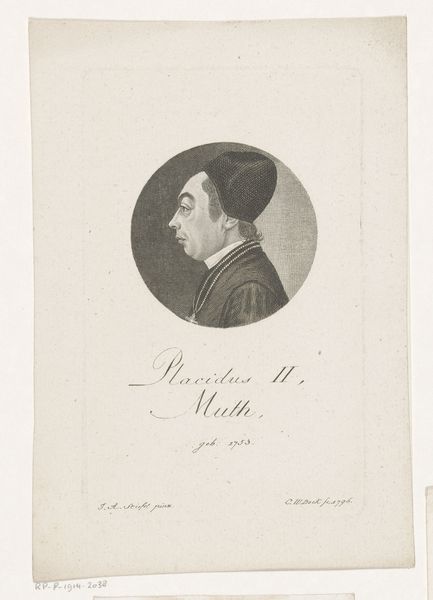
print, engraving
#
portrait
#
neoclacissism
# print
#
pencil sketch
#
old engraving style
#
academic-art
#
engraving
Dimensions: height 139 mm, width 91 mm
Copyright: Rijks Museum: Open Domain
Curator: Welcome. Before us is a piece entitled "Portret van Johann Martin Dorn," dating back to 1800, currently held at the Rijksmuseum. It's an engraving, a print, portraying Christoph-Wilhelm Bock. Editor: My first impression is a sense of austerity. The monochrome palette and crisp lines give it a formal, almost severe feeling, even with the ornate calligraphy beneath the portrait. The paper it's printed on seems aged and brittle, enhancing this feeling. Curator: Indeed. As an engraving, the process itself is one of precision and control. Imagine the labour involved in carefully etching the lines into the metal plate, layer by layer. And of course, there’s a whole other supply chain we could explore here: from paper and ink production to distribution. Editor: I see more than just technical skill, though. The profile, the subject's gaze—there’s a story being told here about status, civic duty, perhaps even self-importance. What symbols did the artist draw upon to convey such ideas to an early 19th century audience? Curator: Well, in this era, a print like this was an important technology for circulating likenesses. The portrait of Johann Martin Dorn, a beer brewer, functions not just as an artwork, but as a signifier of social standing. A consumer product used to solidify Mr. Dorn’s local presence, for example. Editor: Yes, precisely! And look at the oval frame—a symbol of eternity and completion. Even the typeface used in his name contributes. This man is literally being inscribed into the cultural record, given symbolic immortality. The overall composition echoes classical cameos, reminding us of the values inherited from Roman antiquity and deployed by neo-classical styles. Curator: To create these prints, did Christoph-Wilhelm Bock use specialized workshops or was it a self-sufficient operation? The distribution of these items would have given insight into consumer culture at the turn of the 19th Century and that world is not here anymore... it is lost to time. Editor: And with each print, Dorn's image proliferated, reinforcing his presence within the cultural landscape and shaping perceptions around trade, economy, and individual roles in it. It highlights how one image contains a universe of information. Curator: Reflecting on it, this portrait prompts us to think about the tangible, physical aspects of art making and its impact on the marketplace and the working person, like Mr. Dorn. Editor: Absolutely! And for me, it emphasizes how art functions as a vessel for collective memory. The imagery triggers reflection on what previous eras and cultural values may mean to us today.
Comments
No comments
Be the first to comment and join the conversation on the ultimate creative platform.
